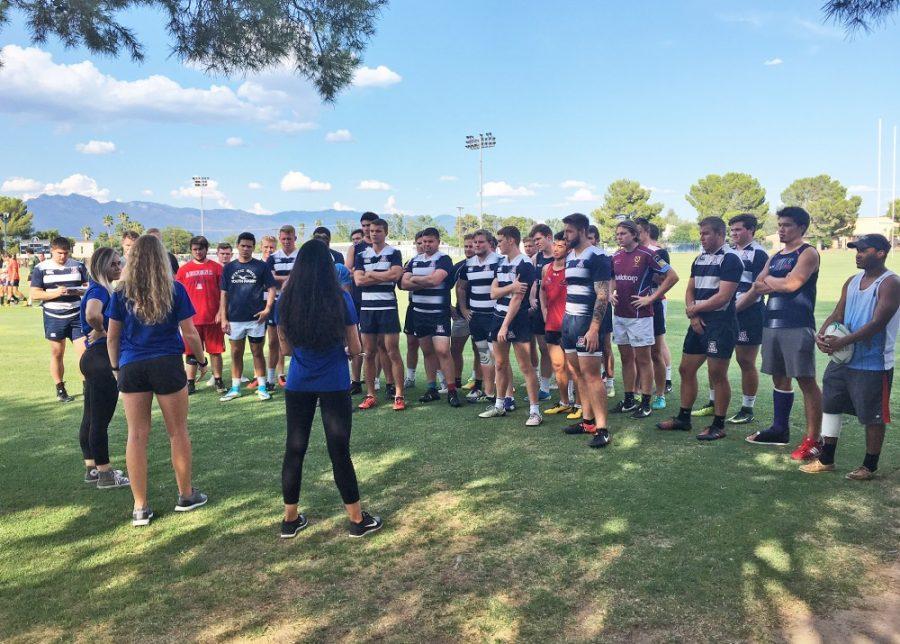The Applied Sports Nutrition course has been providing nutrition support services to the University of Arizona rugby team.
The course workshops with 60 rugby players all semester long and provides them with nutritional education services, which range from assessing the body composition of the players to evaluating their hydration status and doing a dietary analysis.
“Club sports aren’t given any nutritional science services like NCAA sports. They’re on their own,” said Veronica “Ronnie” Mullins, professor of the Applied Sports Nutrition course and assistant professor of practice in nutritional sciences, in a phone interview. “This is a great collaborative opportunity for my students to work with athletes who need their services.”
RELATED: Minute 323 agreement between U.S. and Mexico ensures water sharing until 2026
The course focuses heavily on hydration status, seeing as the team practices in the Arizona heat for hours at a time. According to Mullins, it is important the rugby team comes to practice hydrated and that they make sure they can recover electrolytes lost while sweating.
The kidney is the organ in the body that concentrates urine. If the body, and in turn, the kidney, is more hydrated, the urine becomes more diluted. This indicates a healthier hydration status for everyone, not just athletes, because it means the kidneys can work more efficiently.
The students test hydration using urine refractometers and urine samples from every rugby player. According to Mullins, using a measurement of urine-specific gravity can tell the students how concentrated or diluted urine is.
UA rugby team head coach Sean Duffy said hydration has become very important to the players, especially when they saw evidence of how dehydrated some of them were. According to Mullins, 95 percent of the rugby players are out-of-state students.
“They aren’t acclimatized to the heat,” Mullins said. “I expect that they will improve over time, partially because they will become acclimatized, partially because of the students giving [them] nutrition education.”
Students in the Applied Sports Nutrition course also measure body composition of the rugby players using an ultrasound machine that collects the body fat percentage, because how much each player has to hydrate depends on weight loss and how much they sweat during practice.
Duffy also said the team has been filling out journals of their daily food intake.
“[The players] were surprised to see that they were under-fueling,” Duffy said.
One of the challenges of the course is getting used to working with athletes, Mullins said, because often it is the students’ first time doing so.
“They have to get comfortable with doing the assessments and talking with athletes, [because] these students have a lot of nutrition info in their heads,” Mullins said. “What they are learning is … [how to] translate it to the athletes in a way that makes sense and leads to practical changes that improve performance.”
RELATED: How osmosis is helping bring water to off-the-grid Navajo Nation areas
Duffy said he had been looking for something like the course to help his players better control their nutrition.
“In the three [practice] days we’ve spent with the undergrad students, it fits with the university mission of just checking on other undergrads,” Duffy said. “Some might think that since they haven’t graduated yet, they don’t know what they’re doing, but it’s a great experience to learn. Ronnie has a great group of students.”
The Applied Nutrition Services course will continue to educate and workshop with the rugby team during the spring semester with a new group of students aiding the team in becoming healthier athletes.
Follow The Daily Wildcat on Twitter










